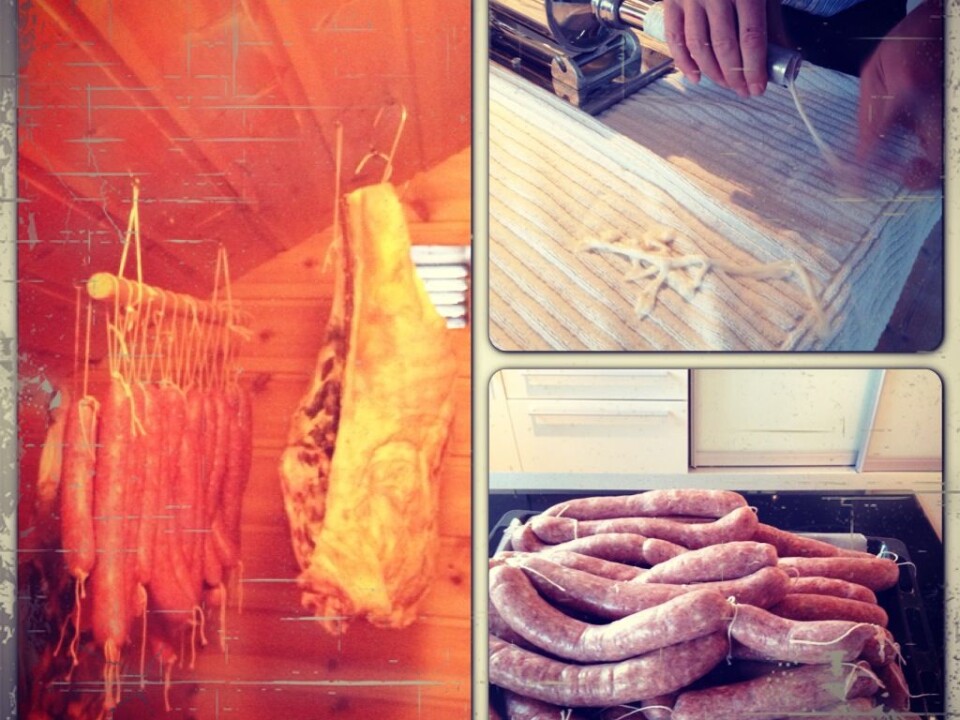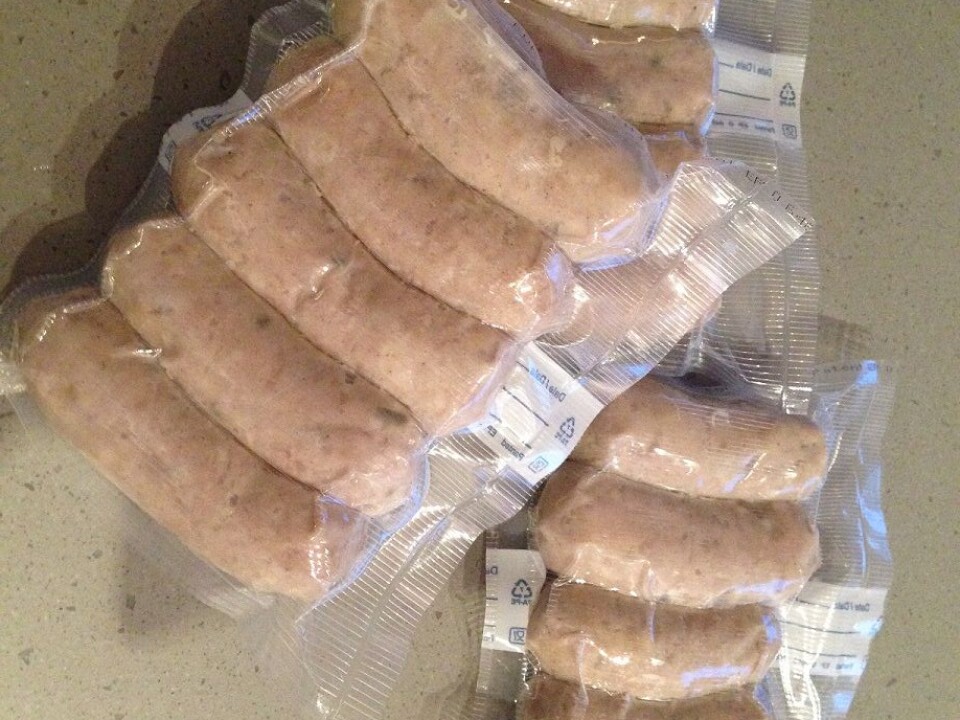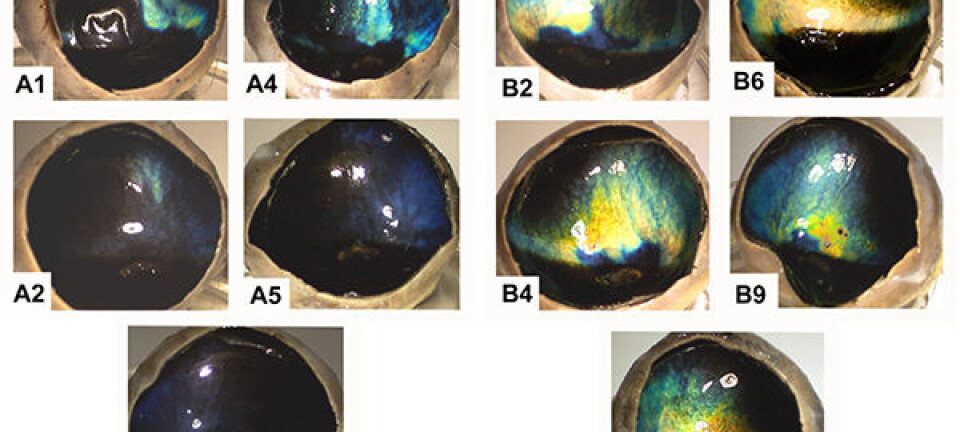An article from Norwegian SciTech News at NTNU

Secrets of a traditional Norwegian Christmas sausage
Making sausages is not just a question of good ingredients and skill. There’s a little science involved, too.
Denne artikkelen er over ti år gammel og kan inneholde utdatert informasjon.
Trygve Magne Eikevik is a professor at NTNU in Norway, and he uses his knowledge to make fresh, delicious sausages all year round. You can do this too, and the professor will happily share his tips for both Christmas sausages and pork sausage.
You don’t have to be a professor to make good sausages. You don’t even need to have a PhD. Good ingredients and elementary sausage making tools, which you can order online, are almost enough. But you do need a little bit of knowledge, and some spare time.
Eikevik has been making his own sausages for 30 years, after he and his wife Randi received a sausage recipe from his mother-in-law that they wanted to try, back in 1984 or 1985. And they’ve continued making them.
The ingredients need to be cold
“Temperature is really important,” says Eikevik.

Mixing the ingredients is no witchcraft, but they should be cold. He recommends putting the ingredients in the freezer for an hour or two to get it at the right temperature and consistency for grinding.
“It has to do with the enzymes,” Eikevik explains.
Enzymes are molecules that are necessary for many chemical processes to start. They work differently at different temperatures. Practically, this means that the ingredients need to go in the freezer before processing so that they stay juicy.
“Then I grind the ingredients, mix them, add spices, and knead the filling by hand until I have a uniform dough.”

Eikevik usually only uses salt and pepper in Christmas sausages, but the spices you choose really depends on your personal taste. After seasoning, it’s time to turn the filling into sausages.
Keep your sausage maker cold too
You can’t have sausages without something to put the filling in. Eikevik buys intestines that are prepared for sausage casing (pig and sheep intestines) from the grocery store, which works for most people.
You need have sausage making equipment as well, which you can get online. Eikevik has gone a step further and made his own, which may be a good idea if you are interested in making sausages as a hobby as well. It is important to keep your equipment cold as well. Having cold sausage filling doesn’t matter if the sausage stuffer is still warm.
Eikevik mainly uses two machines. One is a hand-driven sausage stuffer that he bought in Germany. It can make up to six kilos of sausages at a time, so this is what he uses to make large amounts of sausages around Christmas time. The Christmas sausage and pork sausages are made with this machine. Six kilos is, however, an awful lot if you just want something tasty for the grill on a hot summer day. So he also made a smaller sausage stuffer that makes about one kilo of sausages at a time.
This sausage stuffer looks quite a bit like a large syringe of silicon that you may have used while renovating your house. This way, he can stuff sausages using hand power.
Eikevik was recently in China for official work, but he took the chance to pick up a few tips about sausage making equipment. He hasn’t ordered anything yet, but it looks there may be an electric sausage stuffer from China for Christmas.
Hung up to dry
The next part of the process depends on what type of sausages you are making. Simple lamb sausages are usually thrown onto the grill right away. But Christmas sausages have to be hung up to dry for two to three days. Eikevik has a drying cupboard in his attic, where his sausages can hang together with cured legs of lamb and pinnekjøtt, which is dried, cured lamb ribs.
Sausages need to be hung in a cool, dry place. Where you hang them depends on what you have available. Maybe there is space in your attic. Or maybe you have a cool basement that will work.
Storage
If you make a large batch of sausages, you may not be able to eat them all at once. It may be better to freeze some of them. And really, this is the professor’s area of expertise— conservation and deep freezing.
“I ate some Christmas sausages from last year in November,” he says. “They were still fine.”
Just tossing your sausages in a plastic bag in the freezer and hoping for the best won’t be enough, though.
“I vacuum pack everything I put in the freezer,” he said.
It sounds very complicated, but vacuum packers can easily be found for a few hundred kroner nowadays.
“Everyone should have a vacuum packer,” Eikevik says.
Freeze dryers
When Eikevik isn’t making sausages, he advises 12-13 masters students. He doesn’t have much time to spend in the lab himself nowadays, but he is involved in a variety of different projects.
Right now, he is involved in freeze drying tissue samples. If this method is successful, it means that things like tumour biopsy samples may be able to be freeze dried and stored in a normal refrigerator, instead of special freezers, which could save a lot of people a lot of money. So far, the results look promising.
Mangoes and tomatoes
Eikevik and his colleagues are also working with restaurants in Trondheim, freeze drying different ingredients. One particular test of freeze dried tomatoes and mango shows that, when done correctly, this process yields an incredibly concentrated flavour that can add a little something extra to a good meal.
“All we’ve done is removed the water,” he says.
But freeze dried mango isn’t an ingredient you will find in an Eikevik household Christmas dinner. Instead, you’ll find pinnekjøtt and Christmas sausages steamed together, and pork ribs, sausages and patties.
“I’m rather fond of sausages, of course,” he says.
Eikevik doesn’t turn his nose away from store bought sausages though. But he doesn’t buy the cheapest kinds either. He prefers hearty sausages, as a sausage specialist should.

































